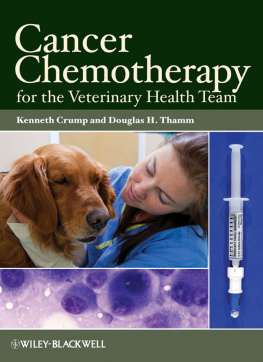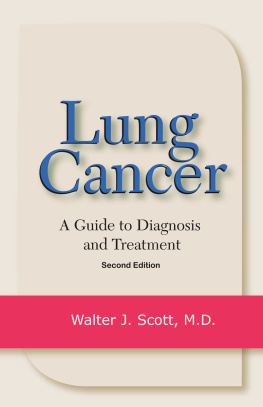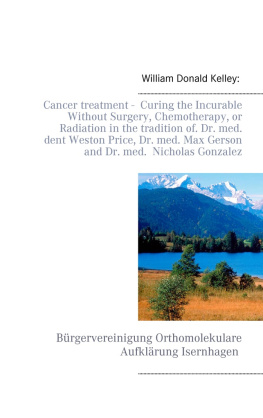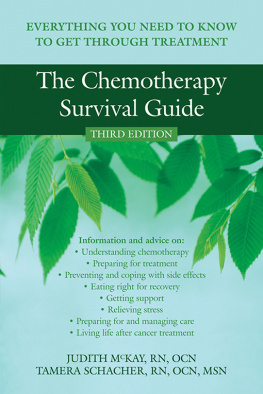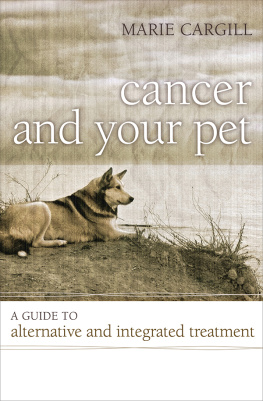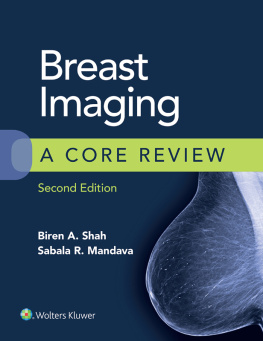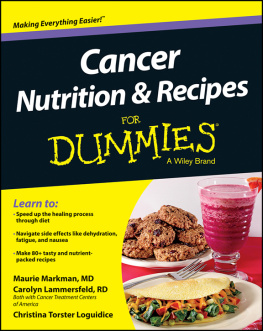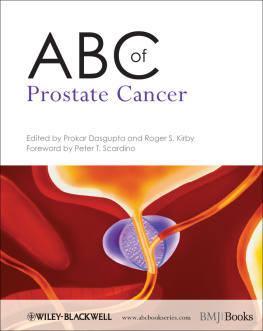This edition first published 2011 2011 by John Wiley & Sons, Inc.
Wiley-Blackwell is an imprint of John Wiley & Sons, formed by the merger of Wileys global Scientific, Technical and Medical business with Blackwell Publishing.
Registered office: John Wiley & Sons Ltd, The Atrium, Southern Gate, Chichester, West Sussex, PO19 8SQ, UK
Editorial offices: 2121 State Avenue, Ames, Iowa 50014-8300, USA
The Atrium, Southern Gate, Chichester, West Sussex, PO19 8SQ, UK
9600 Garsington Road, Oxford, OX4 2DQ, UK
For details of our global editorial offices, for customer services and for information about how to apply for permission to reuse the copyright material in this book please see our website at www.wiley.com/wiley-blackwell.
Authorization to photocopy items for internal or personal use, or the internal or personal use of specific clients, is granted by Blackwell Publishing, provided that the base fee is paid directly to the Copyright Clearance Center, 222 Rosewood Drive, Danvers, MA 01923. For those organizations that have been granted a photocopy license by CCC, a separate system of payments has been arranged. The fee codes for users of the Transactional Reporting Service are ISBN-13: 978-0-8138-2116-0/2011.
Designations used by companies to distinguish their products are often claimed as trademarks. All brand names and product names used in this book are trade names, service marks, trademarks or registered trademarks of their respective owners. The publisher is not associated with any product or vendor mentioned in this book. This publication is designed to provide accurate and authoritative information in regard to the subject matter covered. It is sold on the understanding that the publisher is not engaged in rendering professional services. If professional advice or other expert assistance is required, the services of a competent professional should be sought.
Library of Congress Cataloging-in-Publication Data
Crump, Kenneth, 1952
Cancer chemotherapy for the veterinary health team / Kenneth Crump, Douglas H. Thamm.
p. ; cm.
Includes bibliographical references and index.
ISBN 978-0-8138-2116-0 (pbk. : alk. paper)
1. Tumors in animalsChemotherapy. 2. Veterinary oncology. I. Thamm, Douglas H. II. Title.
[DNLM: 1. Neoplasmsdrug therapy. 2. Neoplasmsveterinary. 3. Drug Therapy methods. 4. Drug Therapyveterinary. SF 910.T8]
SF910.T8C78 2011
636.0896994dc22
2011002196
A catalogue record for this book is available from the British Library.
This book is published in the following electronic formats: ePDF 9780470960042; ePub 9780470960059; Mobi 9780470960066
Disclaimer
The publisher and the author make no representations or warranties with respect to the accuracy or completeness of the contents of this work and specifically disclaim all warranties, including without limitation warranties of fitness for a particular purpose. No warranty may be created or extended by sales or promotional materials. The advice and strategies contained herein may not be suitable for every situation. This work is sold with the understanding that the publisher is not engaged in rendering legal, accounting, or other professional services. If professional assistance is required, the services of a competent professional person should be sought. Neither the publisher nor the author shall be liable for damages arising herefrom. The fact that an organization or Website is referred to in this work as a citation and/or a potential source of further information does not mean that the author or the publisher endorses the information the organization or Website may provide or recommendations it may make. Further, readers should be aware that Internet Websites listed in this work may have changed or disappeared between when this work was written and when it is read.
Contributors
Erin Allen, MSSW, Argus Institute, Clinical Sciences Colorado State University, Fort Collins, CO
Richard Allen, RPh., Diplomate TCVP, Colorado State University, Fort Collins, CO
Gail Bishop, BS, Argus Institute, Clinical Sciences, Colorado State University, Fort Collins, CO
Kenneth Crump, AAS, AHT, Payson, AZ
Douglas H. Thamm, VMD, DACVIM (Oncology), Associate Professor of Oncology, The Animal Cancer Center, Colorado State University, Fort Collins, CO
Preface
More than 1.2 million dogs are diagnosed each year with cancer, a number that trails not far behind the American Cancer Societys estimate of 1.4 million people diagnosed with cancer annually. Animals today have many of the same options for cancer treatment that people consider when treating their own cancers. And every year, more and more devoted owners begin the financial and emotional battle to keep their beloved pets alive.
General practice veterinarians, who may have referred clients to a veterinary cancer specialist in the recent past, now work directly with specialists to offer a convenient and optimal course of chemotherapy for their patients. Spurring the movement toward chemotherapy administration in smaller local practices, the industry now offers safer and cost-effective devices to protect personnel from accidental exposure to cytotoxic drugs. Because these devices can be easily integrated into a practice, training can be completed easily and in a timely manner.
There is great disparity, however, in advanced training opportunities available to veterinary technicians when compared with opportunities available in the human cancer nursing field. Nurse practitioners can seek an advanced degree in oncology nursing and pursue further specialization with certification programs. Oncology nursing students are exposed to the latest approaches to cancer prevention and early detection. Their classroom instruction is supplemented with clinical experiences led by experts in their field. By contrast, virtually every veterinary technician, whether working in a large referral specialty practice or in a small rural general practice, learns to administer chemotherapy on the job.
Cancer Chemotherapy for the Veterinary Health Team is the first handbook of its kind, designed to provide veterinary technicians, and those working as veterinary technicians, concise practical details about the management of the veterinary cancer patient. We have summarized up-to-date information about the patient, the disease, the oncology client, and the treatment of cancer with chemotherapy and organized the major subdivisions into chapters. Key points are included at the beginning of each chapter to facilitate easy access to practical information.
This manual is a comprehensive reference guide to the safe administration of chemotherapy. It dispels myths about treating cancer in pets, teaches techniques of client communication and education, ensures the safety of personnel, and reinforces the value of quality medical care. Veterinary technicians play a central role in the treatment of pets diagnosed with cancer. Whether you see a few cancer patients each hour or a few cancer patients each year, this book details practical and important information you need to unwind the cycle of unpleasant expectations and create a successful chemotherapy experience for the pet, the owner, and the hospital staff.
Kenneth Crump
Douglas H. Thamm
Acknowledgments
This book would not be possible without the team effort of many people and reflects the direct and indirect contributions of a number of doctors, technicians, and owners dedicated to the treatment of pets with cancer. In addition to our talented contributors, the authors are grateful to Polly Webb, Carol Heun, Evan Kim-Thamm, Dr. Kelly Carlsten, Elizabeth Atencio, Jay Oaks, Charlie Kerlee, and Samantha for their assistance with photography, as well as Chelsey Walden-Schreiner and Erica Judisch of Wiley-Blackwell for their enthusiastic guidance and encouragement.

